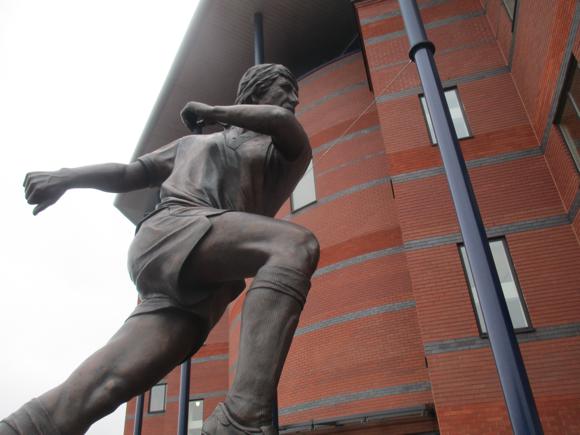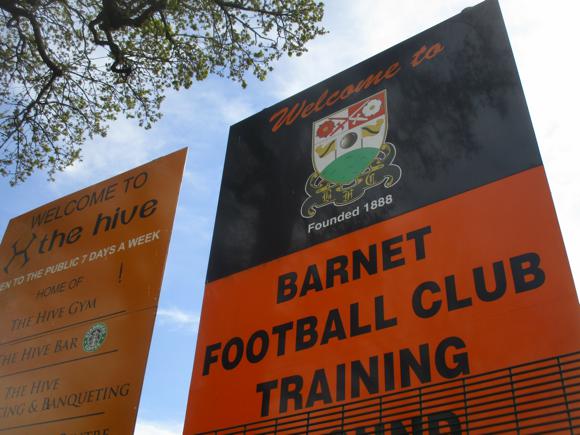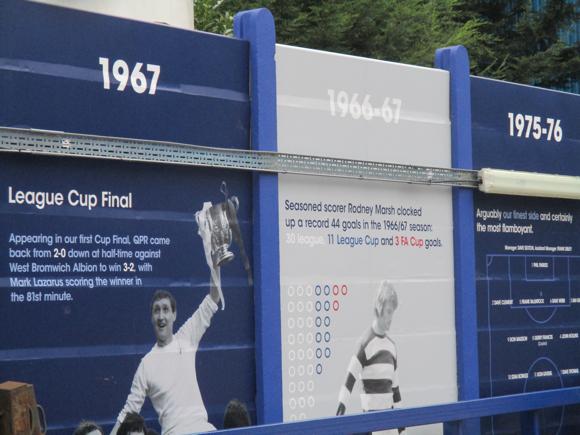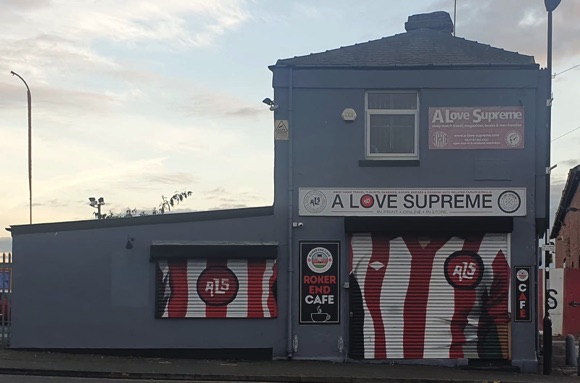A fan’s guide – the club from early doors to today
Revived under new ownership and the transformational management of Unai Emery, Aston Villa made their Champions League debut in 2024, bringing the likes of Juventus and Bayern Munich to venerable Villa Park. The 1-0 win over the Bavarians echoed the Villans’ finest hour, the European Cup win of 1982, decided by the same opponents and scoreline.
The fact that Villa have achieved all this without the key asset the club sold for a British record fee in August 2021 only underlines its significance. A mid-table finish that May had been the best league performance in a decade, preceded by appearances in finals of both cups. Until £100 million dictated otherwise, club captain Jack Grealish was Villa through and through, his great-great-grandfather an FA Cup winner with the Villans in 1905.
The seven-time English champions won six of their titles before World War I. European champions following the last win of 1981, Villa remain one of the great names in English football.





Formed by members of the Villa Cross Wesleyan Chapel in 1874, the team played at Aston Park, close to where draper William McGregor had his business. Encouraged by the presence of two fellow Scots in the team, goalscorer Archie Hunter and captain George Ramsay, McGregor became a club director, then president, then chairman, during which time he instigated the Football League in 1888. The game became professional, crowds flocked in numbers and revenues increased significantly.
FA Cup winners over local rivals West Bromwich in 1887, playing a passing game instilled by Ramsay, Villa dominated the Football League in the 1890s, winning the double in one day in 1897. Howard Spencer and Jimmy Crabtree shared the captaincy of this great Villa side. As manager, Ramsay’s record of league and cup wins stood for a century.
The golden era ended with the title of 1910 and FA Cup of 1913. Ramsay remained manager for 42 years (!). Shortly after his death in 1935, Villa were relegated.





Apart from a solitary FA Cup win over ten-man Manchester United in 1957, Villa trod water until the arrival of manager Ron Saunders in 1974. With one-club forward Brian Little, Villa won two League Cups and climbed back to the top flight. With Little forced to retire through injury, and brave Scots forward Andy Gray leaving for Wolves, Saunders brought in striker Peter Withe, top scorer when Villa won the title in 1981.
With midfielder Gordon Cowans, who would have three spells at Villa Park, and winger Tony Morley, Villa made it through to the final of the European Cup in 1982. An angry Saunders had left halfway through the campaign. His replacement Tony Barton led Villa to an unexpected European Cup win over Bayern Munich, with Withe scoring the only goal. Inexperienced reserve keeper Nigel Spink gave a heroic display.
Under returning chairman Doug Ellis, manager Ron Atkinson took Villa to second place in the inaugural Premier League in 1993, goals coming from Dean Saunders and Dalian Atkinson.





Three years later, with Little as manager, Paul McGrath as centre-back and Dwight Yorke up front, Villa won the League Cup and finished fourth in the Premier.
A string of star managers fell out with Ellis, who relinquished the club to American Randy Lerner in 2006. Under Martin O’Neill, a promising Villa side put in a decent challenge for Champions League football. With captain Stiliyan Petrov and strikers Emile Heskey and Gabriel Agbonlahor, Villa made the League Cup Final in 2010.
After the 2-1 defeat to Manchester United, O’Neill’s departure and Petrov’s enforced retirement through cancer, Villa failed to fulfill their potential under Paul Lambert and Tim Sherwood. Sherwood, at least took Villa to Wembley for a first FA Cup final since 2000. League form, however, remained dire, and Sherwood didn’t last the 2015-16 campaign.
Rémi Garde fared little better, overseeing a 19-game winless run and relegation after 29 years at elite level. Aston Villa had hit rock bottom and by now Randy Lerner was desperate to sell.
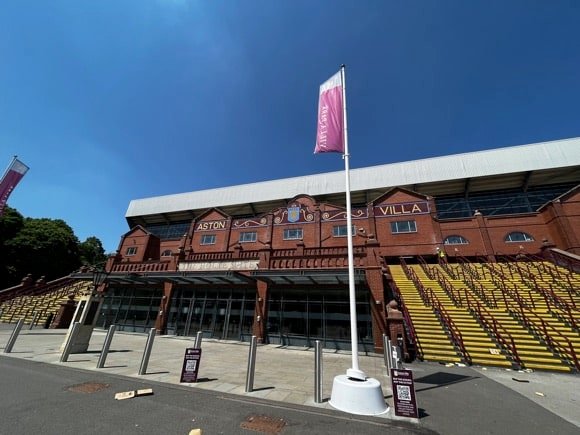




After a decade of holding, then withholding, the pursestrings, Lerner passed on his asset to Chinese entrepreneur Tony Xia, who bought the club he used to watch as a student at Oxford. In with the new régime came manager Roberto Di Matteo, who failed to drag the club out of the Championship. Next came Steve Bruce.
With incoming captain John Terry bringing experience to Villa’s defence and a young Jack Grealish adding guile to the attack, Bruce’s side made the Championship play-off final in 2018. Losing a tense battle 1-0 to Fulham, Villa returned a year later on the back of a winning run in spring, captained by the once-in-a-generation Grealish and under solid manager Dean Smith.
Keeping their nerve in an incident-packed play-off semi with bitter rivals West Brom, settled on spot-kicks by the prolific, on-loan Tammy Abraham, Villa had Scots international midfielder John McGinn to thank for his match-winning performance in the final. Centre-back Tyrone Mings was soon called to the England squad.




Following promotion back to the Premier League, a new ownership team of Egyptian Nassef Sawiris and American Wes Edens stepped in. The club had already raised its profile across the Atlantic thanks to the support of Hollywood star Tom Hanks, mysteriously enchanted by the name of Aston Villa.
While fighting a rearguard action in the league, Villa made the final of the League Cup, nearly taking Pep Guardiola’s Manchester City to extra-time. Bringing in prolific striker Ollie Watkins for £28 million, Villa started 2020-21 brightly, thumping champions Liverpool 7-2 but soon fell away. A mid-table finish proved to be the club’s best league performance in a decade.
It was also Grealish’s last season at Villa Park. With the club since the age of six, a player whose mercurial skills had lit up Euro 2020, the life-long Villa fan couldn’t say no to £100 million of Manchester City’s money. Back in Aston, a poor start to 2021-22 saw the popular Dean Smith sacked and Liverpool legend Steven Gerrard come in, a promising start giving way to despair.

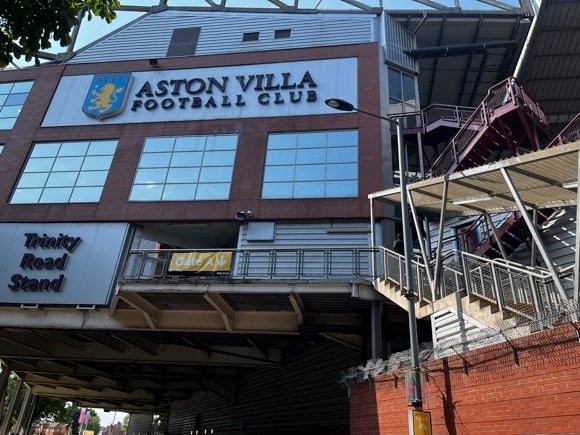


it was now that chairman Sawiris made his smartest move. Having rebranded his global football enterprise V Sports, the richest man in Egypt went all in on attracting former Arsenal boss Unai Emery to Villa Park. The results were almost immediate, a five-win streak in the spring of 2023 granting Villa a first European adventure in over a decade.
By now, Emery could draw on a squad of experienced internationals, World-Cup winning goalkeeper Emiliano Martínez, Polish cap Matty Cash, Belgian midfielder Youri Tielemans, French stalwart Lucas Diagne, Jamaican forward Leon Bailey and, of course, McGinn, Mings and Watkins.
Beating Arsenal home and away in the league, toshing Ajax 4-0 in Europe, Emery’s Villa were high-scoring yet resilient, holding out to overcome Lille on penalties to reach the Conference League semi-finals in 2024. Gamesmanship also helped, Martínez awarded two yellow cards as he applied all the tricks at his disposal to gain the upper hand. Two spot-kick saves also took Villa furthest in Europe since 1982.
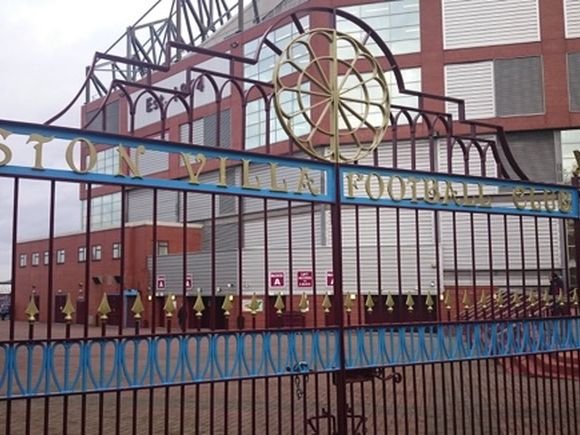
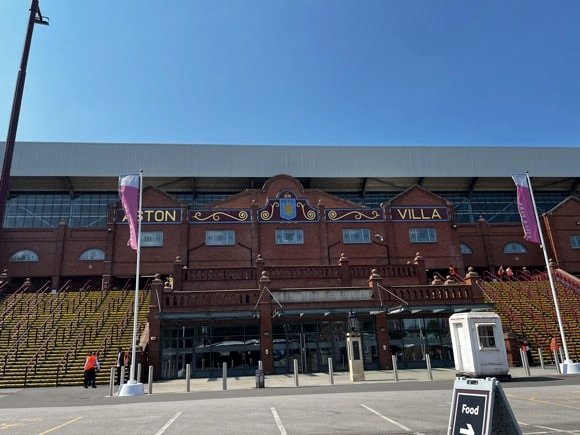


Surprisingly outdone at Villa Park by Olympiacos, thanks to Moroccan hat-trick hero Ayoub El Kaabi, the Villans could take solace in qualifying for a first Champions League season, coinciding with its revamp as a 36-team extravaganza.
Though marred by the sudden death of 1982 European Cup-winning hero Gary Shaw, Villa’s European campaign began strongly, with a routine win at Young Boys Berne then a memorable victory over Bayern Munich. In a magical night on a par with the historic run to the final more than 40 years earlier, Jhon Durán came off the bench to lob Manuel Neuer from distance and earn the unsettled Colombian international a new contract.
The pinnacle of Emery’s transformational stay at Villa Park, the win over the Bavarian giants could also be attributed to spectacular saves from Martínez – the Argentine wasn’t just a disruptor-in-chief – and masterful passing from Spanish international Pau Torres.
Coupled with a win over Manchester City and draw at Arsenal in the league, Villa’s Champions League performances pushed the club back in England’s elite – and with European glory an attainable goal.
GROUND Guide
The field of dreams – and the story behind it

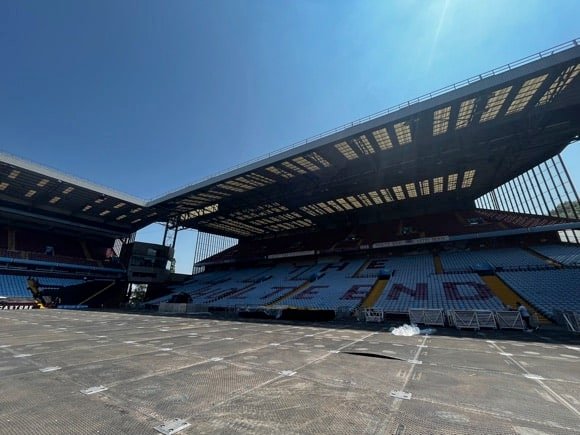


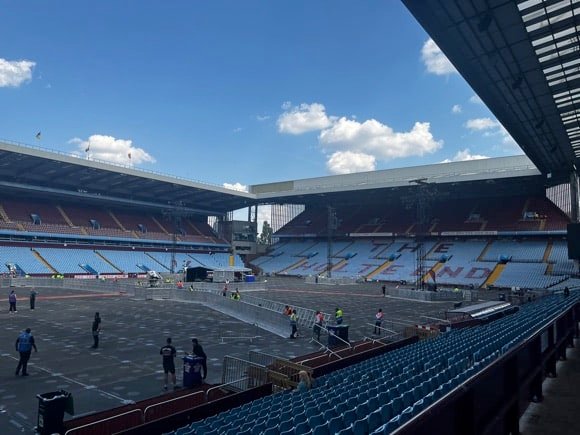

One of the most stately grounds in England, Villa Park is the most frequent neutral host of FA Cup semi-finals and where Lazio won the last Cup-Winners’ Cup Final in 1999.
Like Anfield, Old Trafford and Highbury, it was created by great stadium architect Archibald Leitch in the 1920s.
Before then, the club played at Aston Park, then in the former grounds of Aston Hall, owned by Sir Thomas Holte. Today’s stadium stands in these one-time recreation grounds, within which a sports field and cycling track were laid down.
With Aston Villa’s success in the early 1900s, a terrace and banked standing areas were put in place. Interrupted by World War I, Leitch created arguably the grandest football ground in Britain, its cost astronomical. The famous Holte End was later built by Leitch’s son, interrupted by World War II.





Gradual improvements, particularly for the 1966 World Cup, preceded modernisation under Doug Ellis. Coupled with the obligatory seating restrictions of 1990, this became cripplingly expensive. The Witton Lane Stand was later renamed after Ellis. With the revamping of the Holte End, capacity shrank to 40,000, though the new Trinity Road Stand increased this to today’s 42,640.
Looking as grand as when created by Leitch Junior, the Holte End is the home end. Press and VIPs are accommodated in the Trinity Road Stand. Away fans are allocated the north-east corner of the Doug Ellis/Witton Lane Stand, sectors P8-P11 (turnstiles P87-P89), Q1-Q3 (turnstiles Q91-Q96B). Late arrivals should use turnstiles Q86 or P89.
Planning permission has been granted for the North Stand to be expanded, increasing capacity to 50,000 – although it isn’t clear if this will be in place in time for Euro 2028, which Villa Park co-hosts.
getting here
Going to the ground – tips and timings


Villa Park is located between Witton and Aston train stations. Aston is a longer walk but only two stops and 5min from Birmingham New Street, served by far more trains. Witton is three stops and 10mins away, with trains every 30mins, extra on match days.
Home fans are closer to the Holte End from Aston, away fans better served from Witton. Exiting Witton station onto Witton Road, head left to the roundabout, then left again down Witton Lane.
For 2024-25, the club is continuing to offer its shuttle-bus service, AV82, from Dudley Street by Birmingham New Street station, setting off every 15mins from 3hrs before kick-off and returning from Grosvenor Road near Aston station for up to 90mins after the final whistle. A single is £3, return £5, cash or card from the driver. You can also purchase in advance via the Stagecoach app.
The sat nav code for Villa Park is B6 6HE. There is no parking around the ground on match days. The most popular option for those driving here is to make use of the free parking around the Star City leisure complex (32 Watson Road, B7 5SA), about 25-30mins’ walk away. Head over the roundabout along Cuckoo Road, then left into Nechells Park Road, right into Holborn Hill – this brings you to Aston station. Crossing main Lichfield Road there, head up Grosvenor Road/Queens Road for Villa Park.
There is also limited street parking around Aston station (B6 7PR) itself and at the Aston Inn (B6 7JU), the former New Aston Social Club, on Aston Hall Road, a 7-8min walk to the ground past Aston Parish Church.
getting in
Buying tickets – when, where, how and how much



Tickets can be purchased online and over the phone (UK only 0333 323 1874, Mon-Fri 10am-1pm, 2pm-5pm) by all those with a Fan ID. This can be arranged online, over the phone (see above) or by email (ticketsales@avfc.co.uk). Members (£40, global £30, 3-17s £20) are given priority – membership takes up to 72 hours to become active after purchase. For assistance, contact (UK only) 0333 344 9482, email help@avfc.co.uk.
Tickets go on sale to members about a month before match day, general sale two to three weeks.
The ticket office (see phone hours above) is at the Villa Store in the Villa Village behind the North Stand. It only opens for in-person visits on match days from 9am.
The club also offers hospitality packages.
In practice, the only tickets available for most league games are in sectors A1 (£49, over-66s/under-21s £31.50, under-18s £24, under-14s £14.50) in the corner of the Trinity Road Stand or A2 (£72.50, £54.50, £37, £22) nearer the halfway line. A 50p levy is added for online and telephone purchases.
Away fans are charged £30, over-66s/under-21s £29.50, under-18s £25, under-14s £15.50.
what to buy
Shirts, kits, merchandise and gifts



The Villa Store (Mon-Sat 9.30am-5.30pm, Sun 10am-4pm, match nights) is behind the North Stand. Switching to adidas stripes for 2024-25, the club has had designers weave ‘AV 150’ into the back collar to mark its 150th anniversary.
The detail continues over to the white away tops, whose claret-and-blue collars are a nod to the League Cup triumph of 1975. Third-choice is navy with horizontal pinstripes.
Amid the replica tops, scarves and hats, look out for retro shirts commemorating specific triumphs such as the 1982 European Cup Final and the 1957 FA Cup Final. The club’s 150 History is now a two-volume boxed presentation set, created for the anniversary season.
stadium tours
Explore the ground inside and out

Stadium tours (£23/Sat-Sun £26, under-14s £18/£21) run Mon-Fri 10am-5pm, Sat 10am-8pm, Sun 11am-4pm) take visitors behind the scenes at Villa Park, the home dressing room, the players’ tunnel, the press areas and, of course, the touchline.
Major silverware is on permanent display, allowing you to have your photo taken with the European Cup, FA Cup or former First Division trophy.
Contact 0333 323 1874, email tours@avfc.cu.uk.
Where to Drink
Pre-match beers for fans and casual visitors








From Witton station, the Witton Arms (458 Witton Road) halfway to the ground is a large, sport-focused pub that welcomes only home fans wearing colours on match days. A beer garden is set up and huge screens all round.
The only other option is 10mins walk in the opposite direction from Witton station, along Witton/Brookvale Road, where the Yew Tree offers TV sport and a pool table. In between, you pass a fair few ethnic eateries along Witton Road.
Villa fans can also drop into the rebranded, renamed Aston Inn, the former Aston Social Club on Aston Hall Road by the flyover, halfway between Aston station and the ground.
Bars and restaurants around the ground, most notably the Cornerflag, overlooking the pitch within the North Stand Lower and the impressively renovated Victorian Holte Pub, are reserved for hospitality packages.
This underlines the club’s ambitions to bolster match-day revenue, which increased by over a quarter in 2024. A Fan Zone operates on match days in the former players’ car park, with live music, offering a taste of what the club has planned for the North Grounds near the stadium from Christmas 2025. The Warehouse is slated to be the largest beerhall in the Premier League, accommodating 3,500 on match days and for year-round entertainment.




